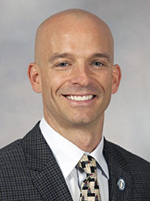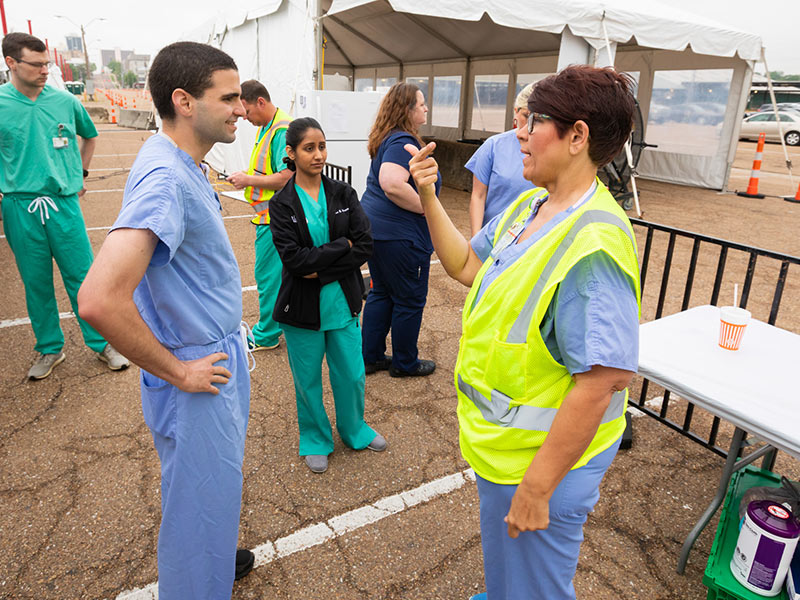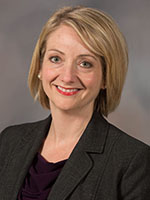Telehealth technology 'linchpin' of Medical Center’s COVID-19 response

Editor's Note: Saturday, June 6, is the final day that the C Spire Health app will be used as a screening tool for COVID-19 testing. After that, Mississippians can be screened and scheduled for appointment-only testing by calling the UMMC Center for Telehealth at (601) 496-7200 or by going to umc.edu/covidscreening.
Telehealth is proving itself to be an indispensable weapon against the spread of COVID-19 in Mississippi.

“UMMC’s COVID-19 response is centered around telehealth,” said Julio Cespedes, director of Telehealth Innovation, Design and Implementation at UMMC’s Center for Telehealth.
Mississippians seeking testing for the novel coronavirus are first triaged through the C Spire Health app and, if appropriate, are given appointments for testing through telehealth. Those who do not have smartphones can call (601) 496-7200 to connect to the Center for Telehealth.
Without UMMC’s telehealth efforts, the state’s response to the pandemic would not function, said Dr. Alan Jones, professor and chair of the Department of Emergency Medicine and interim Chief Telehealth Officer.

“Telehealth is an unsung hero of the COVID-19 pandemic,” Jones said. “It is not only enabling triage in our testing area, but it is helping doctors see patients without putting themselves or their patients at risk. Most certainly, telehealth is saving lives.”
UMMC’s Center for Telehealth, in 2017, was recognized as one of two federally designated Centers of Excellence in Telehealth by the U.S. Health Resources and Services Administration. With this designation comes the mission of supporting the nation with telehealth capacity building, said Dr. Richard Summers, associate vice chancellor for research.

“We are fielding requests across the state, and we are coordinating with our country’s regional telehealth resource centers to support organizations with telehealth needs,” he said. “We have had the opportunity to present our state’s innovative COVID-19 model to all the telehealth resource centers across the country, and in the next two weeks, HRSA will be showcasing our model on a webinar to all community health centers across the country.”
Moving rapidly to meet growing needs, the Center for Telehealth built a work force, adding 25 employees and rebranding the C Spire Health app, originally developed to treat minor medical conditions, to function in the pandemic. Starting March 13, the Center for Telehealth also enabled calls from UMMC employees and students exhibiting COVID-19 symptoms or returning from travel, screening them for their risk of the disease.

“Many teams played a part of bringing the COVID response together,” said Greg Hall, director of information technology at the Center for Telehealth. “The clinical, technology, and administration teams at the Center for Telehealth worked closely with partners from C Spire to rebrand the C Spire Health app to enable the triage of patients. C Spire also created a tool that enabled communications to be sent via text and email to patients enabling them to show proof that they had been properly screened before showing up at the Fairgrounds or one of the pop up testing sites.”
The Center for Telehealth team also worked with the team at the Incident Command Center within the office of Dr. LouAnn Woodward, vice chancellor for health affairs and dean of the School of Medicine, and the Mississippi Department of Health to come up with the workflow plan needed for COVID-19 testing in the state.
“None of this would have been possible without the teamwork between all of these respective teams,” Hall said.

As the pandemic hit, UMMC providers needed a way to care for patients without putting themselves or their patients at risk of contracting COVID-19. To meet that need, UMMC’s Center for Telehealth scaled up the virtual platform UMMC2YOU and provided training across the organization. During 101 UMMC telehealth training sessions, 420 employees and a dozen School of Medicine clinic departments learned the platform’s capabilities and their own.

“The Center for Telehealth was providing training seven days a week,” said Tearsanee Davis, director of clinical and advanced practice operations at the Center for Telehealth.
As a result, the number of UMMC telehealth visits increased 286 percent from Feb. 20 to March 20, and the number of telehealth users rose 5,704 percent during the same time period.
Since then, the growth has continued. From March 23 to April 10, UMMC care teams conducted more than 5,500 patient visits using the UMMC2YOU app, said Kevin Yearick, chief information officer for technology. During the same time period, about 2,900 video visits were made through the C Spire Health app.
“COVID-19 has exponentially increased UMMC’s telehealth usage for normal visits,” Hall said. “As we have shifted to telehealth as a primary modality for ambulatory visits, we have added more than 1,359 new doctors, advanced practice providers, nurses and front-line staff to our UMMC telehealth platform.”

“Telehealth has allowed our pediatric providers to continue to give their patients the care they need,” said Karen Dowling, chief ambulatory and network operations officer for Children’s of Mississippi, UMMC’s pediatric arm. “Most recently, we have started providing physical therapy and occupational therapy to children around the state through telehealth.”
Telehealth technology is also helping conserve personal protective equipment, or PPE. E-care cameras are being used in COVID-19 patient intensive care rooms to allow an expansive care team to see those patients virtually.
In the emergency department, rooms where patients are being isolated have telehealth capabilities so larger care teams can communicate with patients while preventing exposure and spread of COVID-19 and preserving PPE.
“In this time of crisis, we have seen the capabilities of telehealth technology and how they can be used now, to prevent the spread of COVID-19,” Jones said, “and later, once the pandemic has ended. It will remain a powerful part of providing care.”


